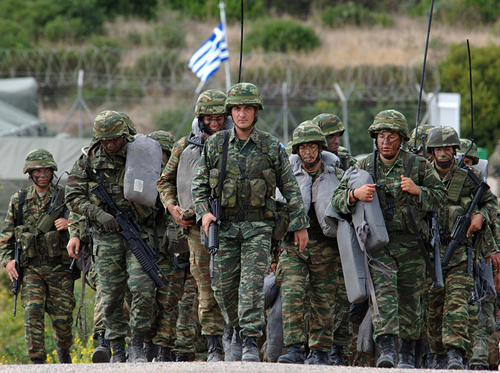Washington ProFile news center posted a report in June 2002 saying that Al Qaeda terrorist organization based its office in Baku in late 1980’s and later began to support Azerbaijan in its war against Armenia for the control over Nagorno Karabakh.
In September 1993, 1.5 thousand Afghan mojahedeens came to Azerbaijan to take part in the Karabakh war, the U.S. sources noted.
“In summer 1994, their number increased up to 2.5 thousand. After serious losses in the battles with Armenians, the Afghan brigade was disbanded, however, many of its members participated in other regional conflicts as well,” the Washington ProFile said.
“Grand Orient's Combatants Front” that took responsibility for the terrorist acts in Turkey in 2003, was also involved in recruiting “holy warriors” to fight Armenians in the Nagorno Karabakh. Gulf News newspaper published in the United Arabian Emirates wrote this in November 2003. “Grand Orient's Combatants Front” recruited “holy warriors” to fight Russians in Chechnya and Daghestan as well.
In January 2002 Armenian Defense Minister and the current Armenian President Serzh Sargssian
addressed the NATO ministerial meeting in Brussels and said that despite the accusations made by Azerbaijan about the support shown by Armenia to the terrorists, the facts witness the opposite.
Armenian Defense Minister recalled that during the Karabakh war the so called "special forces" fighting on Azerbaijan’s side were formed from Afghan and Chechen mojahedeens. Those groups were formed in training camps (in Doliburun, Jdanov region, Seifuli in Shamkhor district, in Ali-Bairamli in Yevlakh region), Sargssian said. In down-town Baku, in "Apsheron" hotel a special office was established that dealt with mercenary recruitment, accommodation and further dislocation in different military units, Armenian Minister noted.
Serzh Sargssian said that after the cease-fire was established in 1994, most of mojahedeens left Azerbaijan. However, some stayed to foster the interest towards Islamic fundamentalism through establishment of training camp network. Ibrahim Eiduras, lately arrested in Europe for participation in the 1998 Embassy bombings, lead the Azeri branch of Al Qaeda between 1995 and 1997, Defense Minister of Armenia declared.
In August 1998 the Azeri branch of "Islamic Jihad," that later merged with bin Laden's Al Qaeda, reportedly coordinated the Embassy bombings in Kenya and Tanzania, Serzh Sargssian said.
Finishing his speech, Armenia’s Defense Minister presented the list of extremist Islamic groups, continuing their work in Azerbaijan.
After the 9/11 U.S. Department of State started to issue “Patterns of Global Terrorism” annual reports. Report for 2001 said:
"While Azerbaijan previously had been a route for international mujahedin with ties to terrorist organizations seeking to move men, money, and materiel throughout the Caucasus, Baku stepped up its efforts to curb the international logistics networks supporting the mujahedin in Chechnya, and has effectively reduced their presence and hampered their activities. It has deported at least six persons with suspected ties to terrorists".
Report issued next year stated that “in previous years the routs of transportation of mojahedeens, who are connected with international terrorist organizations, passed through Azerbaijan.”
“In 2002, Azerbaijan has taken additional efforts and achieved definite success in the prevention of such actions,” the report said. The document also pointed out that Azeri authorities banned the activity of two Arabic funds as well as arrested 6 members of Hizb ut-Tahir extreme Islamic group.





















Comments
Dear visitors, You can place your opinion on the material using your Facebook account. Please, be polite and follow our simple rules: you are not allowed to make off - topic comments, place advertisements, use abusive and filthy language. The editorial staff reserves the right to moderate and delete comments in case of breach of the rules.